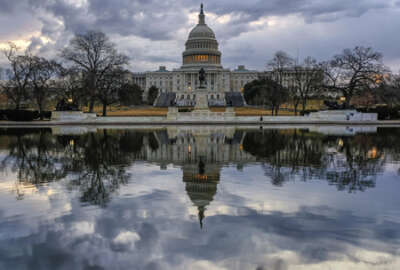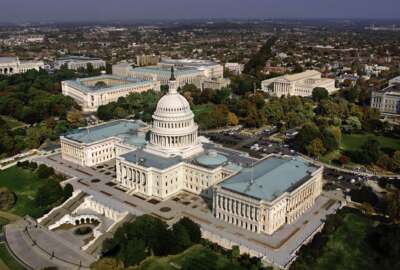
OPM has more details on your back pay during the shutdown
The Office of Personnel Management is instructing agencies to recredit lost time to federal employees' leave banks and pay overtime, night differential and premium...
Though a government shutdown is hardly forgettable for the federal employees who worked or went home because of it, the Office of Personnel Management is attempting to quickly make employee paychecks and leave banks “whole.”
Agency human resources directors received new guidance yesterday from OPM, which details how federal employees will receive back pay and leave after the recent lapse in appropriations.
The three-week continuing resolution that Congress passed and the president signed into law included retroactive pay for furloughed and excepted federal employees during the three-day shutdown.
It applies to federal employees who were furloughed due to the most recent lapse in appropriations or any “excepted employees” who came into their agencies to work at any point during the shutdown.
“Employees should follow the guidance of their respective shared service payroll providers for the recording of time and attendance to ensure that all employees are paid at their standard rate of compensation,” OPM acting Director Kathleen McGettigan wrote in a memo to agencies. “Employees may be required to code furlough time as regular duty to ensure that they are paid properly and promptly.”
In addition, agencies must adjust leave accounts for furloughed federal employees and recredit any lost time during the lapse in appropriations.
“Since the employee is retroactively placed in a pay status, annual and sick leave will accrue in accordance with the normal rules,” OPM wrote.
Employees who were on pre-approved leave without pay during the recent government shutdown will be charged LWOP for those three days.
Federal employees who were scheduled or performed overtime or night work at any point during the shutdown will receive overtime, night differential or premium pay, OPM added.
Meanwhile, pay rates for some senior political appointees, including the vice president, are still frozen at 2013 levels. Once again, the new CR didn’t include any changes in pay for senior officials. Congress would have to raise pay rates for political appointees in the next appropriations legislation to end the current five-year freeze.
Back pay for contractors?
Though federal employees will receive back pay after the three-day partial government shutdown, contractors typically do not.
Like during previous shutdowns, D.C. Del. Eleanor Holmes Norton has introduced a bill that would give back pay to federally contracted retail, food, custodial and security service employees who were placed on unpaid leave during the most recent lapse in appropriations.
“I recognize, of course, that contract workers are employees of contractors, but the distinction between federal workers and, at least, the lowest-paid contract workers who, for example, keep buildings clean, fail when it comes to a deliberate government shutdown,” Holmes Norton wrote earlier this week in a letter to his colleagues in the House. “Unlike many other contractors, those who employ low-wage service workers have little latitude to help make up for lost wages.”
And like the latest continuing resolution that granted retroactive pay to federal employees after the Jan. 20 shutdown, Holmes Norton’s bill appears to give low-wage contractors similar protection for any lapse in appropriations during fiscal 2018.
“Low-wage, federally contracted service workers can least afford the loss of pay during a shutdown and should not have to go to work every day while everyone else in their federal buildings likely received back pay,” Holmes Norton wrote.
The Low-Wage Federal Contractor Employee Back Pay Act is similar to the legislation Holmes Norton introduced back in 2013 after the 16-day government shutdown. The bill never got a vote in the House.
Copyright © 2025 Federal News Network. All rights reserved. This website is not intended for users located within the European Economic Area.
Nicole Ogrysko is a reporter for Federal News Network focusing on the federal workforce and federal pay and benefits.
Follow @nogryskoWFED






